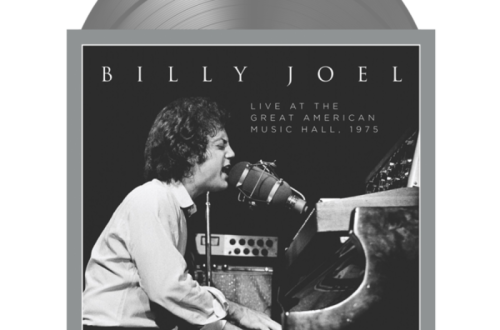Part 1: The Benefits of Creative Hobbies
1. Stress Relief:
Engaging in creative hobbies such as painting, knitting, or playing a musical instrument provides a valuable form of stress relief. These activities offer individuals a chance to enter a state of flow, where their attention is fully absorbed in the present moment, allowing them to temporarily set aside the pressures and worries of daily life. The act of creation, whether through strokes of a brush, intricate movements of knitting needles, or melodic vibrations of musical notes, can be deeply therapeutic, promoting a sense of calmness and reducing anxiety.
The immersive nature of these hobbies allows individuals to attain a meditative state, akin to mindfulness, where they become absorbed in the process of creation, thus quieting the mind and experiencing a sense of relaxation. The repetitive and rhythmic movements involved in many creative hobbies induce a calming effect, promoting a release of tension and stress.
The ability to physically engage in the creative process with hands-on activities can have a profound impact on mental well-being. By channeling one’s energy and focus into the act of creation, individuals can experience a sense of accomplishment and fulfillment, providing respite from the demands of daily life.
Moreover, creative hobbies offer a platform for emotional expression and self-discovery, empowering individuals to externalize and process their emotions through artistic means. This outlet for self-expression can be especially cathartic and conducive to emotional release, offering a healthy way to navigate and address internalized stress.

2. Self-Expression:
Creative hobbies provide an opportunity for self-expression. Whether you are writing poetry, designing jewelry, or creating sculptures, you are able to express your thoughts, feelings, and emotions in a tangible form. This can be incredibly empowering and can help you to gain a deeper understanding of yourself and your innermost thoughts.
Part 2: Finding Inspiration
1. Nature:
Many artists and creative individuals derive inspiration from the natural world. The tranquility and beauty of spending time outdoors can ignite a wealth of inspiration. This can involve hiking in the mountains, strolling along a beach, or simply wandering through a local park. The myriad colors, shapes, and patterns found in nature can stimulate creativity and serve as sources of inspiration for artistic projects. The play of light through the leaves, the texture of tree bark, or the enchanting hues of a sunset can provide new perspectives for creative exploration. Furthermore, the sense of serenity and connection with the environment during outdoor excursions creates an ideal setting for reflection, introspection, and the cultivation of new ideas. Ultimately, the natural world offers a boundless wellspring of inspiration. Artists and creative individuals can draw from it to enrich their work and ignite their creativity.
2. Other Artists:
Surrounding yourself with the work of other artists provides a rich source of inspiration. Visiting art galleries, attending concerts, or delving into literature exposes you to new ideas and diverse perspectives. It nurtures an environment of artistic stimulation and creativity. By immersing yourself in the creations of fellow artists, you open yourself to learning and growth. You can find inspiration in unexpected places.
Experiencing the unique styles, techniques, and emotions conveyed in the works of others expands your artistic horizons. It ignites fresh approaches and innovative ideas for your own creative endeavors. The exposure to a diverse array of artistic expressions cultivates a broader understanding of the creative process. It sparks the imagination and enriches your own artistic repertoire. Ultimately, engaging with the work of other artists encourages continual artistic evolution. It guides you to forge your own path while drawing inspiration from the myriad voices and visions that populate the artistic landscape.

Part 3: Exploring Different Creative Hobbies
1. Painting and Drawing:
Painting and drawing are timeless and classic creative hobbies that provide an avenue for visual self-expression. Whether you favor the fluidity of watercolors, the versatility of acrylics, or the simplicity of pencil and paper, engaging in these artistic pursuits brings with it a profound sense of fulfillment. The act of creating art offers a canvas for experimentation. It enables individuals to explore a myriad of techniques, styles, and artistic approaches. It allows for the cultivation of new skills and the honing of existing ones.
Additionally, the process of creating art can be a deeply immersive and introspective experience, providing a means to communicate emotions, narratives, and personal visions through the language of visual expression. From the strokes of a brush to the delicate lines drawn on paper, the act of artistic creation continually presents new opportunities for learning, exploration and self-discovery.
2. Crafting and DIY Projects:
Crafting and do-it-yourself projects offer a versatile and fulfilling avenue for self-expression and personal growth. Engaging in activities such as knitting, sewing, woodworking, or creating handmade cards provides individuals with a canvas for unleashing their creativity while simultaneously acquiring new skills. These versatile hobbies present endless opportunities for crafting unique and personalized items, enabling individuals to translate their ideas into tangible creations and share their talents with others.
Through activities like knitting and sewing, individuals can explore a range of textile arts, creating bespoke apparel, accessories, and home décor items that reflect their personal style and vision. These crafts not only allow for the expression of creativity but also offer a practical means of producing functional and aesthetically pleasing items.
Woodworking, on the other hand, presents an opportunity to delve into the realm of craftsmanship, where individuals can learn to manipulate and shape wood to fashion bespoke furniture, decor, or carpentry projects. The act of working with raw materials and tools encourages skill development and presents a medium for self-expression that combines functionality and aesthetics.
Similarly, creating handmade cards provides an outlet for artistic expression in a more compact form. It allows individuals to convey their sentiments and creativity through personalized and thoughtful greetings, showcasing their skills in design and crafting.

Part 4: The Joy of Making
1. Sense of Accomplishment:
The process of creating something with your own hands brings about a profound sense of accomplishment. Whether you have completed a painting, finished a knitted scarf, or written a piece of music, the feeling of satisfaction that accompanies the culmination of a creative project is undeniably rewarding. It signifies the manifestation of your vision and efforts, evoking a deep sense of pride and fulfillment. This achievement serves as a testament to your skills and perseverance. It also contributes to a bolstered confidence in your abilities as a creator. The act of bringing an artistic concept to fruition represents a tangible display of your creativity and dedication. This fosters a stronger belief in your capacity to innovate and produce meaningful work. Ultimately, the sense of accomplishment derived from creating with your own hands serves as a powerful motivator. It encourages continued exploration and expression of your artistic talents.
2. Connection with Others:
Engaging in creative hobbies allows individuals to express themselves. It also provides an opportunity to connect with like-minded individuals who share their passion. Whether one joins a community choir, knitting group, or art class, creative hobbies create a space for people to come together. This fosters a sense of community and camaraderie. Sharing one’s work with others and receiving feedback can be immensely beneficial. It offers a chance to grow and improve as an artist. Through interaction and collaboration with others, individuals can gain new insights, exchange ideas, and learn from different approaches. This social aspect of creative hobbies provides a supportive environment where individuals can develop their talents and find encouragement, creating lasting connections, and establishing a sense of belonging within a community that shares their love for artistic expression.




